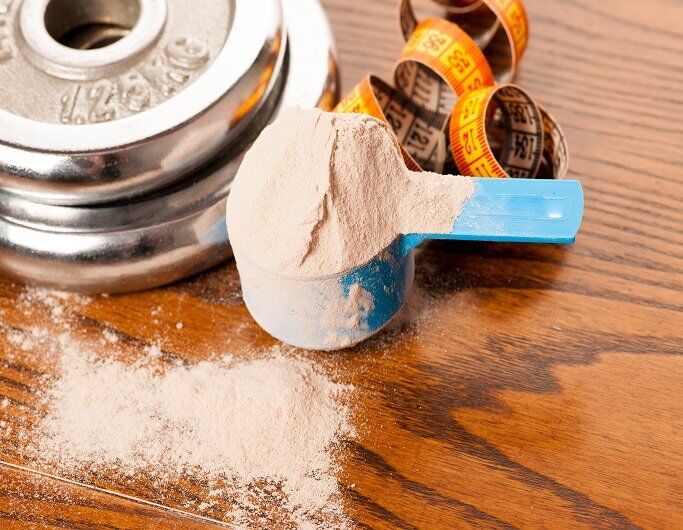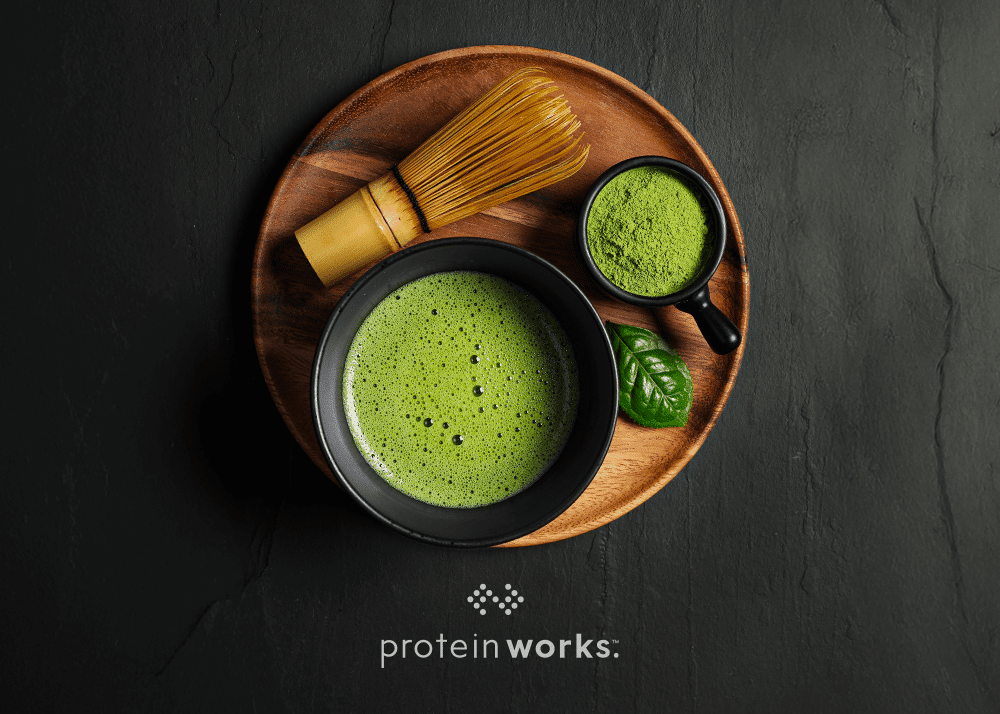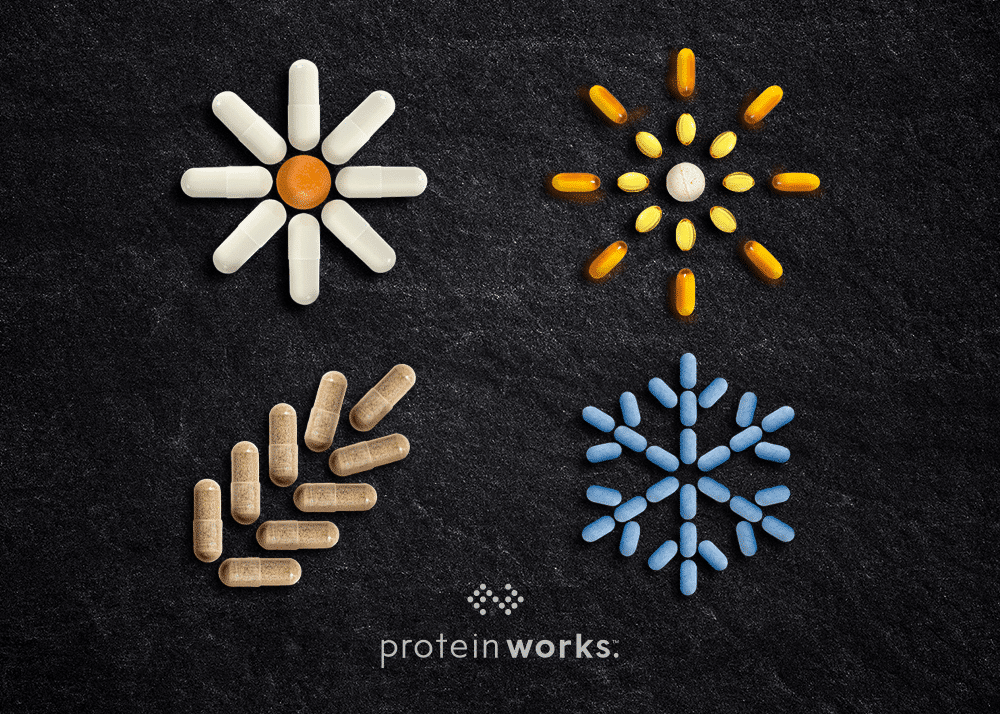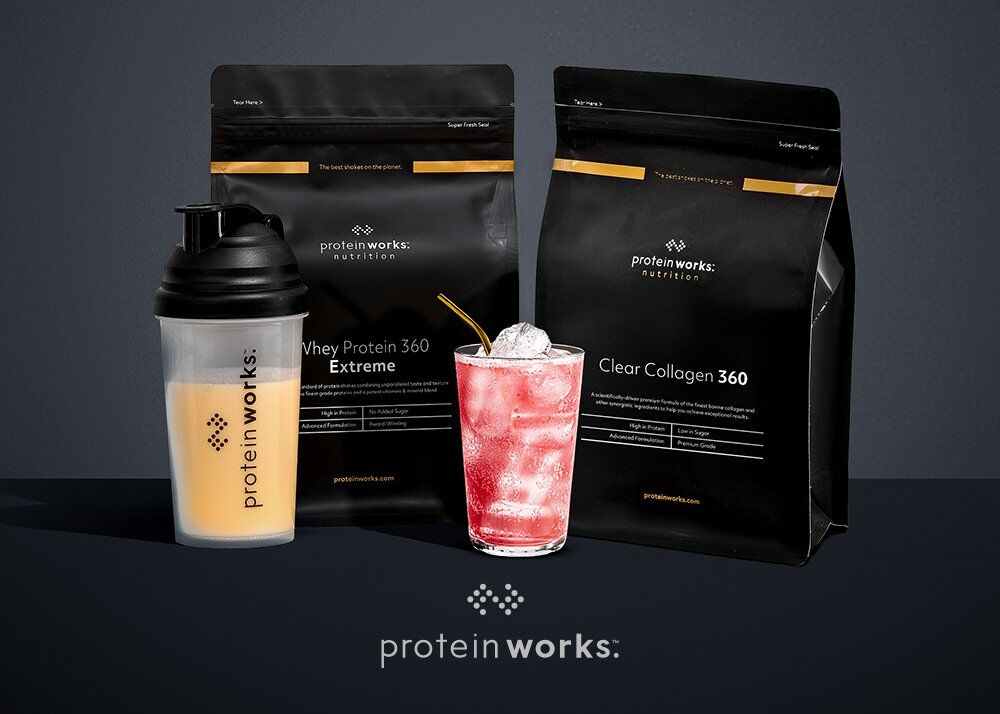Reviewed By Kyle Crowley MSc Sports Nutrition | Reviewed Again On:24/07/2020
There are great myths that surround the supplementation of protein shakes. This article discusses the benefits of protein supplementation, who should be using protein shakes and what to consider before consuming them.
- Protein Shakes For Recovery
- Protein Shakes For Muscle Growth
- Protein Shakes For Weight Loss
- Protein Shakes For Energy
What are Protein Shakes? & Who should be using them?
Protein shakes are healthy high protein drinks used as a convenient, easy and cost-effective way of increasing your protein intake. Often found in powdered form, which is then added to water or milk and blended to create a smooth shake.
As with all protein shakes on the market, they will have different flavourings and other ingredients added depending on which you go for and are often tailored towards specific goals, – here at Protein Works we cater for all – some examples of protein shakes that exist are as follows:
This is where other ingredients are added that are to aide your specific goals. .
Protein Shakes have been used for years, however in recent times they have become more mainstream, and it is not just gym-goers who are now enjoying a tasty protein shake,
Although protein shakes should always be consumed alongside a healthy diet, they are now the go-to an effective way of boosting protein levels. Literally, anyone and everyone can use protein shakes, as like we said they can often be tailored towards different nutrition goals.
They’re also a great way of simply boosting vitamins and minerals too if you struggle to get these through your diet alone.
Types Of Protein Shakes
Protein Shakes can be found in different forms, but the most popular are the ready to mix powders. Here you can add as little or as much as you like with water or milk, depending on your preference. If you’re not sure which one to choose we have an article that goes into detail, just click here to be directed through: ‘Protein Shake With Water Or Milk’.
Even though there are many shakes out there tailored towards different goals, there are actually many different types of protein used in these too, from dairy free, plant-based powders, to whey, milk based powders. Here’s a list of the most commonly used types of protein in protein shakes.
Dairy Protein Types: Whey Protein Concentrate, Whey Protein Isolate, Hydrolysed Whey Protein, Micellar Casein Protein, Milk Protein.
Non Dairy (Vegan) Protein Types: Egg Protein, Hemp Protein, Soy Protein, Pea Protein
Those are the types of protein shakes that exist but now we will discuss exactly some of the benefits of consuming a protein shake and why you would take them.
Protein Shakes for Recovery
Protein is an essential nutrient that plays a vital role in the daily function of the body. Amongst other things, it builds and repairs skin, blood, bones, muscles and cartilage. Without adequate protein in the diet, muscles won’t have the tools to help build and repair healthy muscle tissue.
For those who perform regular exercise, recovery is essential to enable you to reach your full potential at the next training session. Studies have indicated that if an insufficient amount of protein is consumed in an athletes diet that the athlete can develop a negative nitrogen balance, indicating protein catabolism and slow recovery (Phillips et al. 2016). Over time, this slow recovery and protein catabolism may lead to muscle wastage, injuries, illness and training intolerance (Phillips et al. 2011). By increasing your protein intake through protein shakes, this is much less likley to happen. (Tipton, 2015)
The first 30-60 minutes after working out is the optimum time to consume a recovery based protein, this is simply down to our bodies being in the most absorbable state directly after exercise. The optimal time period during which to ingest protein is subjective to the individual and how his/her body deals with protein.
However, it’s important to note that different types of proteins have different rates of digestion and/or absorption (Bucci et al. 2000).
Solid food takes time to break down, digest and send to the muscles, making protein shakes a better alternative. Though, making sure you choose the correct protein is just as important, for example, micellar casein protein takes much longer to absorb, thus a sustained slower release of amino acids, whereas a protein blend like that in our All in One Recovery Protein can be absorbed much quicker.
Protein has also shown to reduce inflammation in muscles which overall reduces recovery times. Inflammation is your body’s response to damage. This damage occurs when taking part in physical exercise as muscle fibres tear, which is ultimately how we rebuild stronger.
Short term inflammation isn’t anything to worry about, however, under some circumstances, it can become chronic, which can be harmful and can even become a risk factor of injury or illness. A study performed with protein supplementation found it significantly reduced c-reactive protein, a key metric of inflammation in the body (zhou et al. 2015)
Protein Shakes for Muscle Growth
Protein shakes can be used for those looking to build and grow muscle mass through the stimulation of muscle protein synthesis.
Muscle protein synthesis is the basic process of building muscle mass, and this is essential for exercise recovery and adaptations, which is why you’ll see most professional athletes consuming protein-rich meals and protein shakes on a regular basis to help build lean muscle mass and strength.
For years there has been a debate surrounding how much protein an athlete should actually consume for performance reasons (Lemon et al. 1992). It was first said that no more than the RDA (recommended daily allowance) of protein should be consumed.
However, recent studies have shown that in fact that athletes who engage with physical exercise on a regular basis should be consuming at least two times the RDA to maintain nitrogen balance. (Jager et al. 2017).
Studies on younger individuals show a relation towards the need for protein, exercise and the dosage for maximum muscle protein synthesis (Moore et al. 2009).
For those involved with weight and resistance training, performing multiple working sets, consisting of several exercises and large working muscle groups, a dosage of up to 40g of protein is needed for protein synthesis to really make an impact (Witard et al. 20014).
Protein shakes like our Total Mass Matrix Extreme contain up to 54g of both fast and slow absorbing proteins to help keep muscle protein synthesis stimulated for a longer period of time, contributing to recovery and muscle growth
Protein Shakes for Weight Loss
Protein shakes can also be designed with weight loss goals in mind too. There are many different weight loss shakes on the market, so making sure you choose the right one will ultimately give you the best possible chance of reaching your goals.
Studies have indicated that high protein consumption has the ability to significantly increase fat-free mass while resistance training (Cribb et al. 2007), this was also shown in another study conducted by Cermak et al (2012) who performed a meta-analysis examining protein supplementation on changes in strength and fat free mass.
Data from over 22 studies and 680 individuals combined demonstrated a positive correlation of protein consumption and fat free mass.
Furthermore, a similar study was undertaken by Morton on 1863 participants also concluded that protein positively impacts fat-free mass with consumption of at least 1.62g of protein per kilogram of body weight per day (Morton, 2018).
Not only does a high protein diet help to induce fat-free mass, but it also helps to increase satiety (the feeling of being full), which helps to reduce your appetite, lowering your calorie consumption, and thus promoting a calorie deficit and overall weight loss.
Different foods have different levels of satiety, however, protein has shown to be the most filling of the three macronutrients we consume (Paddon et al. 2008).
Protein Shakes For Energy
When proteins are digested they’re broken down into individual amino acids (Pasini et al. 2018). Around 75% of these amino acids are synthesized into new proteins which are then used in the muscle (Hou, 2016). However, additional amino acids are also converted into energy. Amino acids have a very similar chemical structure to glucose, but with an addition of nitrogen. Once this nitrogen has been removed, the amino acids are often converted into glucose or fatty acids and then used as energy (Berg, 2002). Due to the amino acids taking longer to be broken down and this additional nitrogen being removed, proteins result in a slower but longer lasting sustained release of energy than carbohydrates (Brooks, 2007).
Protein itself is possibly not the best energy sources for immediate release, however, many protein shakes are given additional ingredients that can provide this energy release if needed.
Considerations
Protein shakes should be viewed as a supplement. This means they should be used in conjunction with a healthy balanced diet. Protein shakes are used to help enhance your diet, not substitute it.
Protein Shakes provide you with a convenient and cost-effective way of boosting your protein intake, with the help of other additional ingredients. Not only are protein shakes very easy to use, but they also taste pretty great too, whether you choose water or milk to mix them with.
The main consideration needed to be taken is what is your goal for consuming the protein shake? This will help you select the right protein shake for you, for example, there would be no point in selecting a shake with high calories and carbohydrates if weight loss is your goal and vice versa.
Protein shakes have been subject to 1000’s if not millions of scientific testing, just make sure you check the ingredients list so you know exactly what goes into each scoop.
References
Kerksick et al. Journal of the International Society of Sports Nutrition (2018) 15:38
Phillips SM, Chevalier S, Leidy HJ. Protein “requirements” beyond the rda: implications for optimizing health. Appl Physiol Nutr Metab. 2016;41(5):565–72.
Phillips SM, Van Loon LJC. Dietary protein for athletes: from requirements to optimum adaptation. J Sports Sci. 2011;29(Suppl 1):S29–38.
Tipton KD. Nutritional support for exercise-induced injuries. Sports Med. 2015;45(Suppl 1):S93–104
Bucci L, Lm U. Proteins and amino acid supplements in exercise and sport. In: Driskell J, Wolinsky I, editors. Energy-yield macronutrients and energy metabolism in sports nutrition. Boca Raton: CRC Press; 2000. p. 191–212.
Lemon PW, Tarnopolsky MA, Macdougall JD, Atkinson SA. Protein requirements and muscle mass/strength changes during intensive training in novice bodybuilders. J Appl Physiol. 1992;73(2):767–75
Tarnopolsky MA. Protein and physical performance. Curr Opin Clin Nutr Metab Care. 1999;2(6):533–7.
Tarnopolsky MA, Macdougall JD, Atkinson SA. Influence of protein intake and training status on nitrogen balance and lean body mass. J Appl Physiol. 1988;64(1):187–93.
Jager R, Kerksick CM, Campbell BI, Cribb PJ, Wells SD, Skwiat TM, Purpura M, Ziegenfuss TN, Ferrando AA, Arent SM, Smith-Ryan AE, Stout JR, Arciero PJ, Ormsbee MJ, Taylor LW, Wilborn CD, Kalman DS, Kreider RB, Willoughby DS, Hoffman JR, Krzykowski JL, Antonio J. International society of sports nutrition position stand: protein and exercise. J Int Soc Sports Nutr. 2017;14:20
Moore DR, Robinson MJ, Fry JL, Tang JE, Glover EI, Wilkinson SB, Prior T, Tarnopolsky MA, Phillips SM. Ingested protein dose response of muscle and albumin protein synthesis after resistance exercise in young men. Am J Clin Nutr. 2009;89(1):161–8
Witard OC, Jackman SR, Breen L, Smith K, Selby A, Tipton KD. Myofibrillar muscle protein synthesis rates subsequent to a meal in response to increasing doses of whey protein at rest and after resistance exercise. Am J Clin Nutr. 2014;99(1):86–95
Cribb PJ, Williams AD, Carey MF, Hayes A. The effect of whey isolate and resistance training on strength, body composition, and plasma glutamine. Int J Sport Nutr Exerc Metab. 2006;16(5):494–509.
Cermak NM, Res PT, De Groot LC, Saris WH, Van Loon LJ. Protein supplementation augments the adaptive response of skeletal muscle to resistance-type exercise training: a meta-analysis. Am J Clin Nutr. 2012; 96(6):1454–64.
Morton RW, Murphy KT, Mckellar SR, Schoenfeld BJ, Henselmans M, Helms E, Aragon AA, Devries MC, Banfield L, Krieger JW, Phillips SM. A systematic review, meta-analysis and meta-regression of the effect of protein supplementation on resistance training-induced gains in muscle mass and strength in healthy adults. Br J Sports Med. 2018;52(6):376–84.
Paddon-Jones D, Westman E, Mattes RD, Wolfe RR, Astrup A, Westerterp-Plantenga M.. (2008). Protein, weight management, and satiety. American Journal Of Clinical Nutrition. (5)87.
Veldhorst MA, Nieuwenhuizen AG, Hochstenbach-Waelen A, van Vught AJ, Westerterp KR, Engelen MP, Brummer RJ, Deutz NE, Westerterp-Plantenga MS.. (2009). Dose-dependent satiating effect of whey relative to casein or soy. Physiology & Behaviour. 5 (1), p675-682.
Zhou LM, Xu JY, Rao CP, Han S, Wan Z, Qin LQ. (2015). Effect of whey supplementation on circulating C-reactive protein: a meta-analysis of randomized controlled trials.. Nutrients. 7 (2), p1131-1145.
Pasini, E.; Corsetti, G.; Aquilani, R.; Romano, C.; Picca, A.; Calvani, R.; Dioguardi, F.S. Protein-Amino Acid Metabolism Disarrangements: The Hidden Enemy of Chronic Age-Related Conditions. Nutrients 2018, 10, 391
Hou Y, Yao K, Yin Y, Wu G. Endogenous Synthesis of Amino Acids Limits Growth, Lactation, and Reproduction in Animals. Adv Nutr. 2016;7(2):331–342. Published 2016 Mar 9. doi:10.3945/an.115.010850.
Berg JM, Tymoczko JL, Stryer L. Biochemistry. 5th edition. New York: W H Freeman; 2002. Section 23.3, The First Step in Amino Acid Degradation Is the Removal of Nitrogen
Brooks, GA. (2007). Amino acid and protein metabolism during exercise and recovery.. Medicine and sports in science journal. 19 (5), p150-156.







No Comments yet!